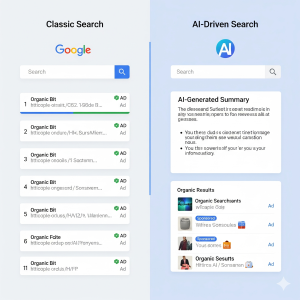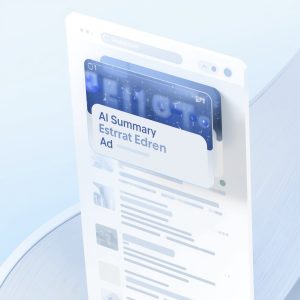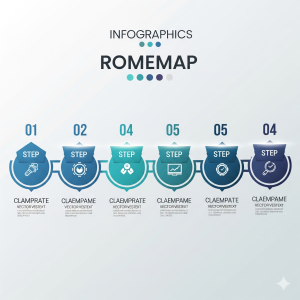Introduction

Search results are changing from simple lists of links to interactive experiences that provide answers first. AI summaries and “AI Mode” now offer direct answers on the SERP, and advertisers are seeing their ads incorporated into these AI responses. This shift affects intent signals, creative expectations, measurement, and how brands capture attention. This post outlines the change and provides a step-by-step playbook you can use today.
What changed (short)

AI-driven SERPs present synthesized answers to complex queries, often featuring a visual or narrative block at the top. When an AI response aligns with commercial intent, ads can show up within or beside that block. The outcome is more impressions and opportunities for discovery, but fewer guaranteed clicks to websites. There is now a greater need for clear, answer-focused creative.
Where ads appear now

- Inside AI answer blocks, labeled as sponsored content
- In the visual or summary card that accompanies the AI response
- Still in traditional organic/Search and Shopping slots, but user attention has shifted
Step-by-step playbook (do this in order)

- Audit AI-triggering queries
Identify long-form, comparison, and how-to queries your audience uses. Focus on those that trigger answer blocks or conversational results. - Adjust targeting and match strategy
Broaden strategic match options for complex queries and combine with Smart Bidding (tCPA / tROAS). Use negative keywords to exclude low-value research queries. - Create AI-native ad creative
Write headlines and descriptions that focus on answers (using Q&A style). Include one clear next step, such as buy, compare, or trial. Provide short videos, specifications, and visuals to ensure automated campaigns have strong assets. - Optimize product feeds and assets
For Shopping and PMax, ensure feeds contain useful attributes (specifications, sizes, price, availability) and high-quality images, as AI blocks favor rich, structured data. - Strengthen first-party signals
Use enhanced conversions, customer match, and Consent Mode to keep automated bidding effective as third-party signals decrease. - Test device and query segmentation
Conduct experiments by device type and query length (desktop vs. mobile; short vs. long queries) to see where AI placements produce the best results .Measurement and testing (practical)

Track impressions, assisted conversions, and micro-conversions (such as viewed products or added-to-cart) instead of relying on last-click tracking. Use short pre- and post-windows, along with geo/device holds, to estimate incremental lift. Review query reports weekly to identify new AI-triggering phrases and gaps in creative.
Risks and watchouts

- Attribution blur: More in-SERP answers mean traditional attribution will underestimate influence.
- Creative thinness: Low-quality or missing assets can limit eligibility for AI placements.
- Policy and quality changes: Rules for AI SERPs will change—stay aware of policy updates and performance fluctuations.
Conclusion

AI-driven SERPs serve as both discovery engines and navigation tools. Advertisers don’t need a specific campaign type, but they must create AI-native content, provide strong assets, improve first-party signals, and measure success beyond just clicks. Treat AI answer blocks as high-visibility displays: be useful, be specific, and design ads that provide answers before being asked.